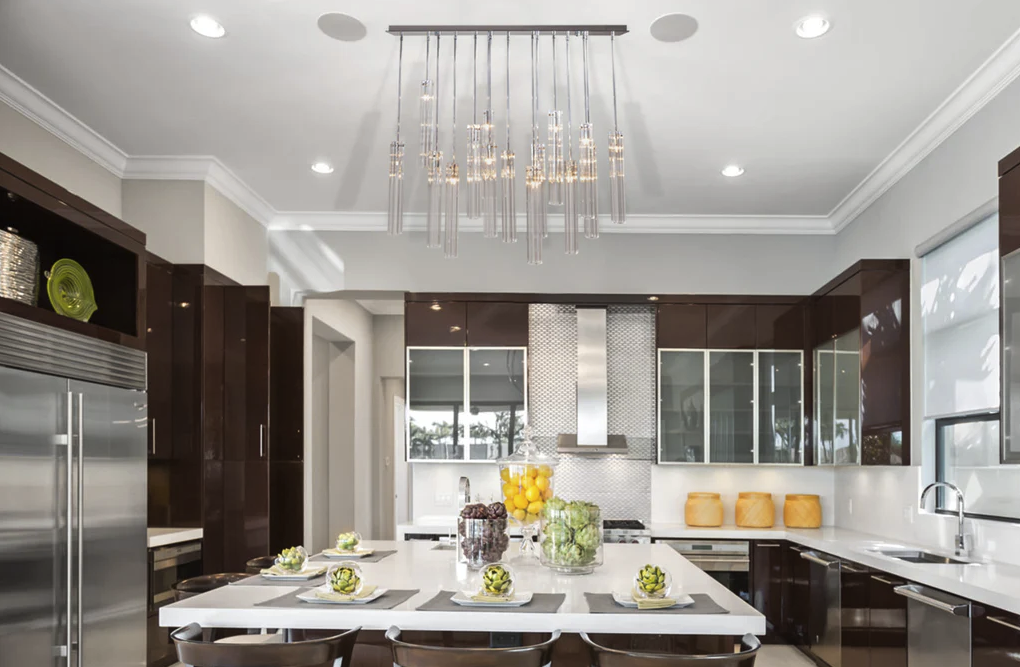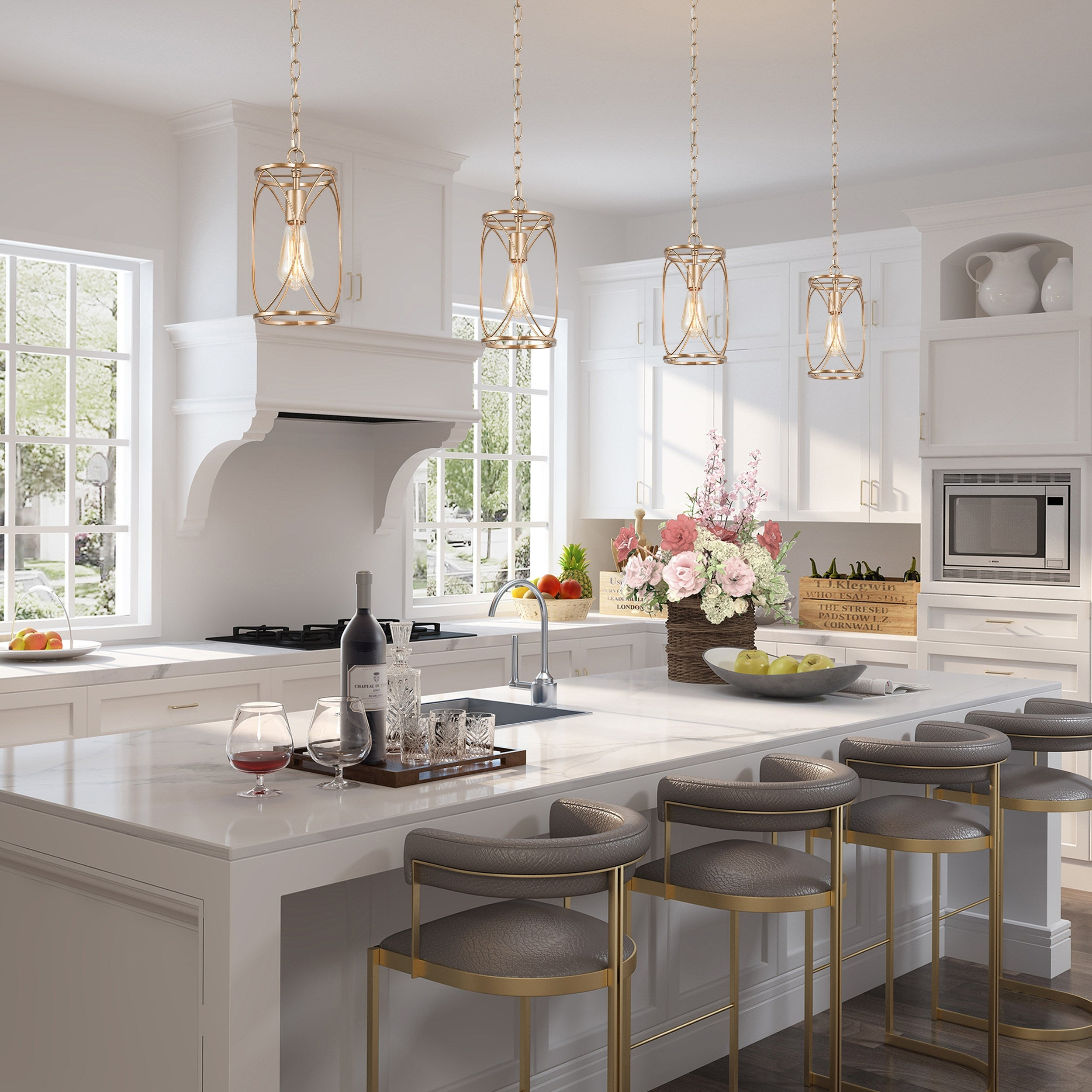Selecting the appropriate lighting style for a space is a fundamental step in interior design that can dramatically influence the overall ambiance. The style of lighting should harmonize with the existing decor and architectural elements of the room. For instance, a modern minimalist space may benefit from sleek, geometric fixtures that emphasize clean lines and simplicity.
In contrast, a rustic farmhouse aesthetic might call for warm, vintage-inspired pendant lights or wrought iron chandeliers that evoke a sense of nostalgia and warmth. Understanding the overarching theme of your home is crucial; it allows you to choose lighting that not only illuminates but also enhances the character of each room. Moreover, the choice of lighting style extends beyond mere aesthetics; it also reflects personal taste and lifestyle.
For example, someone who enjoys entertaining may opt for statement chandeliers or dramatic wall sconces that create an inviting atmosphere for guests. On the other hand, a person who values tranquility and relaxation might prefer soft, diffused lighting options such as floor lamps with fabric shades or recessed lighting that provides a gentle glow. By carefully considering both the style and the intended mood of each space, homeowners can create a cohesive look that resonates with their individual preferences while ensuring functionality.
Sizing and Placement
The size and placement of lighting fixtures are critical factors that can either enhance or detract from a room’s design. When selecting fixtures, it is essential to consider the scale of the space. A large chandelier in a small room can overwhelm the area, making it feel cramped and cluttered.
Conversely, tiny pendant lights in a spacious dining area may get lost, failing to provide adequate illumination or visual interest. A general rule of thumb is to choose fixtures that are proportionate to the dimensions of the room; for instance, a chandelier should ideally be about one-half to two-thirds the width of the table it hangs above. Placement is equally important in achieving effective lighting.
For instance, in a kitchen, task lighting should be strategically positioned over work areas such as countertops and islands to ensure visibility while cooking. In living rooms, ambient lighting should be distributed evenly to avoid dark corners that can create an unwelcoming atmosphere. Additionally, considering the height at which fixtures are hung can significantly impact their effectiveness; for example, pendant lights should typically hang 30 to 36 inches above a dining table to provide adequate illumination without obstructing views.
Thoughtful sizing and placement not only enhance functionality but also contribute to the overall aesthetic harmony of a space.
Types of Lighting
Understanding the various types of lighting is essential for creating a well-lit environment that serves multiple purposes. Generally, lighting can be categorized into three main types: ambient, task, and accent lighting. Ambient lighting provides overall illumination for a room and is often achieved through ceiling fixtures, chandeliers, or wall-mounted sconces.
This type of lighting sets the mood and creates a comfortable atmosphere for everyday activities. Task lighting, on the other hand, is designed to illuminate specific areas where activities such as reading, cooking, or working take place. Examples include under-cabinet lights in kitchens, desk lamps in home offices, and bedside lamps Lucksnail for reading.
These fixtures should be bright enough to facilitate tasks without causing eye strain. Accent lighting serves to highlight particular features within a space, such as artwork, architectural details, or plants. This type of lighting adds depth and dimension to a room by drawing attention to focal points.
By thoughtfully incorporating all three types of lighting, homeowners can achieve a balanced and functional illumination scheme that enhances both aesthetics and usability.
Incorporating Dimmers
Dimmers are an often-overlooked element in lighting design that can significantly enhance the versatility and ambiance of a space. By allowing users to adjust the brightness of their lights, dimmers provide greater control over the atmosphere in any given room. For instance, in a dining area, dimming the lights during dinner can create an intimate setting that encourages conversation and relaxation.
Similarly, in a home theater, lower light levels can enhance the viewing experience by reducing glare on screens. Incorporating dimmers also contributes to energy efficiency. By reducing the intensity of light when full brightness is unnecessary, homeowners can save on electricity costs while extending the lifespan of their bulbs.
Modern dimmer switches are available in various styles and technologies, including smart dimmers that can be controlled via smartphone apps or voice commands. This level of convenience allows users to customize their lighting experience effortlessly. Whether for practical purposes or aesthetic enhancement, integrating dimmers into your lighting scheme is an effective way to elevate your home’s ambiance.
Mixing and Matching
The art of mixing and matching different lighting styles and fixtures can lead to a dynamic and visually interesting environment. Rather than adhering strictly to one style or type of fixture throughout your home, consider blending various elements to create a more personalized look. For example, pairing industrial-style pendant lights with vintage-inspired sconces can add character and depth to a space while showcasing your unique taste.
When mixing fixtures, it’s essential to maintain some level of cohesion to avoid a disjointed appearance. This can be achieved through color palettes or materials; for instance, using brass accents across different fixtures can tie together diverse styles seamlessly. Additionally, varying heights and shapes among light sources can create visual intrigue while ensuring that each piece serves its purpose effectively.
The key is to strike a balance between variety and harmony; this approach not only enhances aesthetic appeal but also allows for greater flexibility in design.
Adding a Statement Piece
Incorporating a statement lighting piece can serve as a focal point within a room, drawing attention and sparking conversation. A bold chandelier or an oversized pendant light can transform an otherwise ordinary space into something extraordinary. For example, a dramatic crystal chandelier in an entryway not only provides illumination but also sets an elegant tone for the rest of the home.
Similarly, an artistic floor lamp in a living room can serve as both functional lighting and an eye-catching sculpture. When selecting a statement piece, consider the scale and style of your space to ensure it complements rather than overwhelms the environment. A large fixture may work beautifully in an expansive room with high ceilings but could feel out of place in a cozy nook.
Additionally, think about how the statement piece interacts with other elements in the room; it should enhance the overall design rather than compete with it. By thoughtfully integrating a standout fixture into your decor, you can elevate your space while showcasing your personal style.
Consider the Functionality
While aesthetics play a significant role in lighting design, functionality should never be overlooked. Each room serves different purposes, and the lighting should cater to those needs effectively. In spaces like kitchens and home offices where tasks require focus and precision, bright task lighting is essential for safety and efficiency.
Conversely, areas designated for relaxation—such as bedrooms or reading nooks—benefit from softer ambient lighting that promotes comfort. Moreover, consider how different activities within each space may require varying levels of illumination throughout the day. For instance, natural light during daytime hours may suffice in living areas; however, as evening approaches, layered lighting becomes crucial for maintaining comfort and usability.
Incorporating multiple light sources—such as ceiling fixtures combined with floor lamps or wall sconces—allows for flexibility in adjusting brightness levels based on specific activities or moods. By prioritizing functionality alongside aesthetics, homeowners can create spaces that are not only beautiful but also practical for everyday living.
Maintenance and Care
Proper maintenance and care of lighting fixtures are essential for ensuring their longevity and optimal performance. Dust accumulation can dull the brightness of bulbs and obscure decorative elements in fixtures; therefore, regular cleaning is necessary to maintain their appearance and functionality. Depending on the type of fixture—be it glass chandeliers or metal sconces—cleaning methods may vary; using appropriate cleaning solutions will help preserve finishes without causing damage.
Additionally, it’s important to periodically check bulbs for burnout or flickering issues; replacing them promptly not only ensures consistent illumination but also prevents potential electrical hazards associated with faulty wiring or connections. For more complex fixtures such as chandeliers or multi-light pendants, consulting with professionals for installation or maintenance may be advisable to avoid damage during cleaning or repairs. By committing to regular upkeep of your lighting elements, you can enjoy their beauty and functionality for years to come while maintaining a safe environment within your home.





